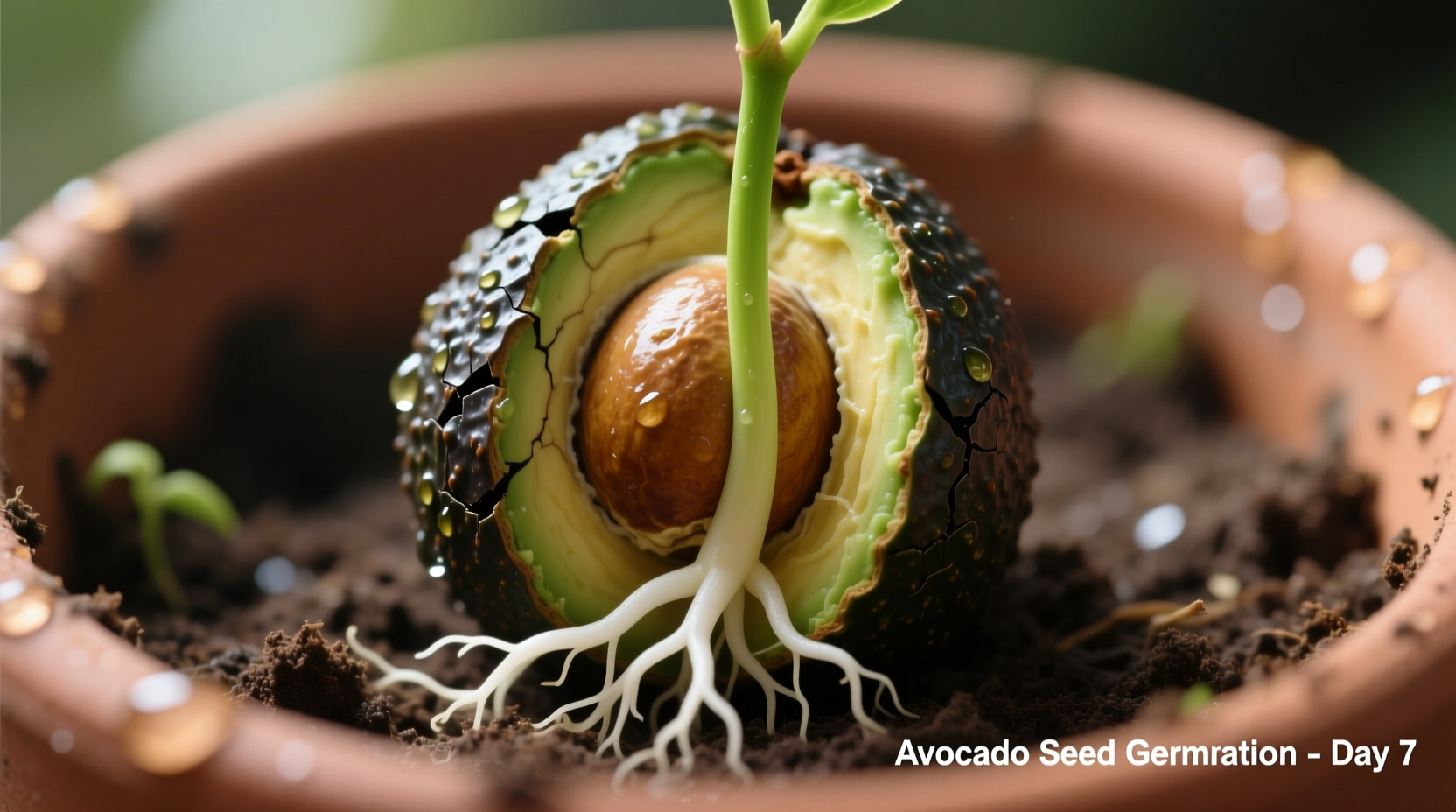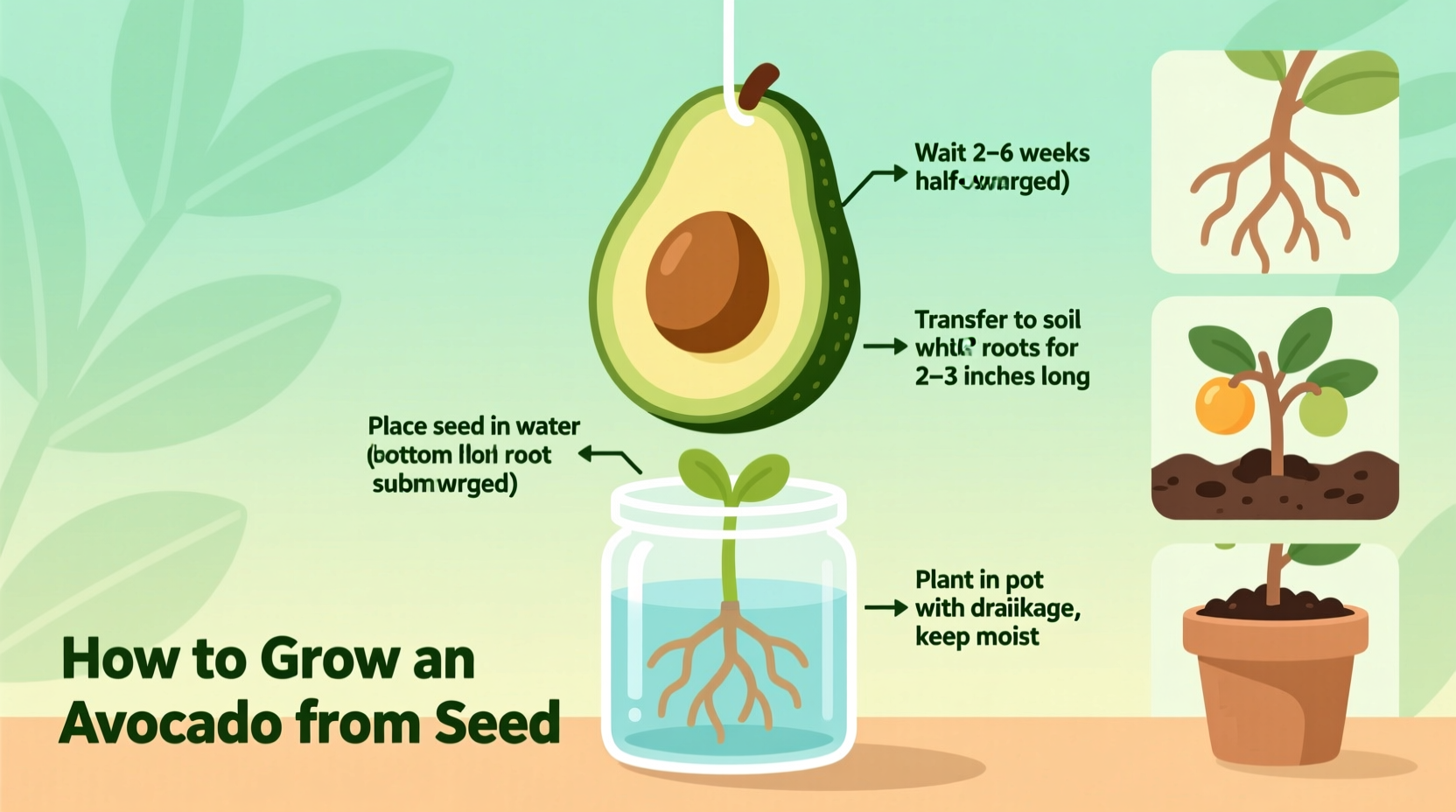Yes, you can successfully grow an avocado plant from seed in 3-8 weeks using the toothpick water method or direct soil planting. While homegrown avocado trees rarely produce fruit, they make attractive houseplants that grow 20-30 feet tall outdoors or 6-8 feet as indoor specimens with proper care.
Grow Your Own Avocado Plant: A Foolproof Guide for Beginners
Have you ever wondered what to do with that avocado pit after making guacamole? Instead of tossing it, transform it into a lush, green houseplant! Growing an avocado from seed is one of the most rewarding kitchen experiments you can try. In this guide, you'll learn exactly how to germinate your avocado seed, nurture it into a thriving plant, and avoid common mistakes that cause failure.
Why This Method Works When Others Fail
Many people try growing avocados from seed only to see their seedlings wither after a few weeks. The secret lies in understanding the avocado's natural growing conditions. Native to Mesoamerica, avocado trees thrive in warm, humid environments with well-draining soil. By mimicking these conditions at home, you dramatically increase your success rate. Our method combines traditional knowledge with modern horticultural science for maximum germination success.
What You'll Need to Start
- Fresh avocado seed (from a ripe fruit)
- Toothpicks (for water method) OR seed-starting mix (for soil method)
- Clear glass or jar (for water method) OR 6-inch pot with drainage holes
- Warm location with indirect sunlight
- Misting spray bottle
Your Step-by-Step Avocado Growing Journey
Step 1: Prepare Your Avocado Seed Properly
Not all avocado seeds are created equal. Choose a seed from a ripe, undamaged fruit. Gently remove any remaining fruit flesh without scratching the brown seed coat. Rinse thoroughly under warm water. Determine the top (pointed end) and bottom (flat end) - the roots will emerge from the flat end.
Step 2: Choose Your Germination Method
You have two proven options for sprouting your avocado seed:
| Water Method | Soil Method |
|---|---|
| Insert 3-4 toothpicks around the seed's equator | Plant seed with flat end down, 1 inch deep |
| Suspend seed over water, covering bottom 1 inch | Use moist seed-starting mix, not garden soil |
| Change water every 5-7 days | Maintain consistent moisture (not soggy) |
| Best for observing root development | Higher success rate for long-term growth |
Step 3: The Critical Germination Phase
Place your setup in a warm spot (70-85°F / 21-29°C) away from direct sunlight. The water method typically shows results in 2-8 weeks. Look for these key milestones:
Weeks 1-3: The seed coat cracks open
Weeks 3-5: Roots emerge from the bottom
Weeks 5-8: Stem and leaves appear from the top

Step 4: Transplanting to Permanent Home
Once your seedling reaches 6-7 inches tall with several leaves, it's ready for transplanting. Use a pot at least 10 inches wide with drainage holes. Fill with a mix of:
- 50% potting soil
- 30% perlite or sand
- 20% compost
Bury the seed so half remains above soil level. Water thoroughly and place in bright, indirect light.
Step 5: Ongoing Care for Healthy Growth
Avocado plants have specific needs that differ from most houseplants:
- Watering: Keep soil consistently moist but never soggy. Water when top inch feels dry.
- Light: 6-8 hours of bright, indirect sunlight daily. Rotate pot weekly for even growth.
- Temperature: Maintain 65-85°F (18-29°C). Avoid cold drafts and sudden temperature changes.
- Fertilizing: Every 2-3 months with balanced houseplant fertilizer during growing season.
Managing Realistic Expectations
While growing an avocado from seed is rewarding, understand these important limitations:
- Housegrown avocado trees rarely produce fruit (typically requires grafting)
- Fruit production, if it occurs, takes 10-15 years
- Indoor plants max out around 6-8 feet tall without pruning
- Outdoor growth possible only in USDA zones 9-11 (frost-sensitive)
Troubleshooting Common Problems
Even with proper care, issues may arise. Here's how to fix them:
| Problem | Symptom | Solution |
|---|---|---|
| Yellow leaves | Leaves turning yellow while veins remain green | Apply iron supplement; improve drainage |
| Leaf drop | Sudden loss of multiple leaves | Check for overwatering; increase humidity |
| Slow growth | Minimal height increase over months | Move to brighter location; fertilize appropriately |
| Brown leaf tips | Dry, brown edges on leaves | Use filtered water; increase humidity |
When to Consider Alternative Propagation Methods
If your goal is fruit production rather than just a houseplant, understand that seed-grown avocados don't reliably produce fruit identical to the parent tree. For fruit-bearing trees, consider these alternatives:
- Grafting: Attach a fruiting branch to your seedling (requires expertise)
- Purchase grafted trees: Nurseries sell varieties like Hass or Fuerte that reliably produce fruit
- Air layering: Advanced technique to create fruiting trees from existing plants
Enjoy Your Avocado Journey
Whether you're growing your avocado plant as a decorative houseplant or hoping for future fruit, the process connects you with nature in a meaningful way. Each stage of growth offers satisfaction, from watching the first roots emerge to seeing your plant thrive under your care. Remember that patience is key—avocado trees grow slowly but steadily. Within a year, you'll have a beautiful, leafy companion that started as nothing more than a kitchen scrap!











 浙公网安备
33010002000092号
浙公网安备
33010002000092号 浙B2-20120091-4
浙B2-20120091-4